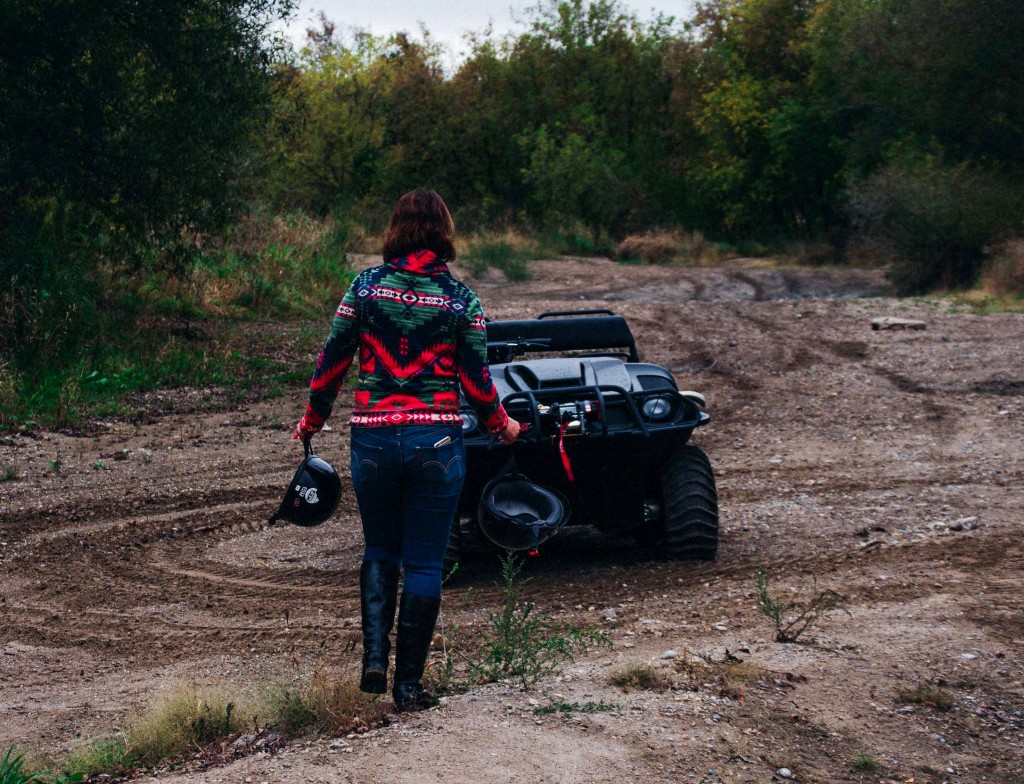Getting the Equipment and Training You Need to Use Your Argo Safely

An Argo XTV can travel over just about anything, including water, mud, sand, snow and steep inclines. It also uses a unique drive system that’s part skid steer, part ATV and part sand buggy. How can you stay safe operating something that’s so different from other off-road vehicles? Here’s what you need to know about getting the right protective gear and training so you can protect yourself when operating your Argo.
Safety Equipment
Since an Argo operates on both land and water, you need a mix of off-road and boating equipment.
A DOT certified helmet: While any certified helmet with a good fit will protect your head, choosing the right style of the helmet will do a lot to make your ride more comfortable. A road helmet will work, but a motocross helmet makes it easier to look down at the ground surrounding your vehicle. It also provides better airflow at low speeds, keeping your head cool. Snowmobile helmets are based on motocross designs, but they add features for cold weather protection. This usually includes a breath shield that prevents your visor or goggles from fogging up.
Eye protection: Look for goggles designed to work with your helmet. If you have a motocross helmet, a set of motocross goggles will fill in the space around the visor opening, shielding your face from dust and debris.
Over-the-ankle boots: Why do you need boots when you’re riding inside a vehicle? At some point, you’ll need to get out and walk on rough terrain. Over-the-ankle safety and motocross boots keep your ankle from twisting. The added support also reduces fatigue when walking over uneven surfaces, helping prevent leg injuries. The last thing you want to do is hurt yourself when you’re trying to get your vehicle unstuck.
Personal flotation device: When you have your amphibious ATV on water, you should treat it like a boat. That means wearing a PFD at all times, in case your vehicle tips or sinks. Which kind of PFD is best? It depends on how you’ll use it.
Inherently buoyant PFDs are made from foam that traps air, making it float. These are the cheapest, easiest-to-use option, but they’re also bulky. Inflatable PFDs use a carbon dioxide cartridge to fill air chambers. On one hand, this makes them far less bulky, making them more comfortable to wear, especially in the summer. On the other hand, if you need help staying afloat, you still have to be conscious and able to swim while you activate the inflation system. Hybrid systems combine foam and inflatable chambers, offering the best of both worlds, but they come with a high price tag.
The PFD needs to fit snug over your clothes, so you may need a separate winter PFD that will fit over your cold-weather gear. No matter the design, it’s a good idea to get a model with reflective tape to make you easier to find during a rescue.
Cold Weather Protection
Cold is dangerous by itself, but the risk of frostbite and other injuries is compounded by wind chill. If you’re riding at top speed, you’re effectively adding 20-25 mph to the current wind speed. Reduce your risk by doing the following:
– Eliminate all skin exposure. Be sure to cover gaps around the neck and wrists between your gloves, helmet, and jacket.
– Dress in layers. By removing or adding clothing, you can maintain your body temperature without sweating. Wet clothing is ineffective against cold. Choose wicking fabrics for your base layer to keep your skin dry.
– If you do a lot of winter riding, consider adding weather protection to your XTV. Argo offers windshields and tops that can shield you from the elements. If you have a liquid-cooled engine, you can also add a heater.
Learning to Ride
There is no XTV-specific course available to get you up to speed on using your Argo. The best approach is to learn how to operate similar vehicles, then practice on your Argo.
While an XTV is more stable than an ATV, for the most part, both vehicles behave the same way. That’s why Argo recommends the ATV Safety Institute Course to learn basic riding skills. To complete the course, you will need to take their online E-Course, then sign up for the RiderCourse at a local training center.
Depending on where you operate, you may need to register your Argo as a boat to enter the water. Even if you don’t, you should take some basic water safety and boating courses.
For longer and more remote excursions, consider taking some survival courses. Major recreational areas may offer classes specific to the area, while it’s always good to learn general skills like ice safety and first aid.
We Have Everything You Need to Get the Most from Your Argo
Are you looking for a better off-road vehicle? Do you want to get more from your XTV? Shank’s Argo is one of the largest dealers in the Eastern U.S, offering sales, parts, accessories, and service for these vehicles. Visit us in person at 4900 Molly Pitcher Highway in Chambersburg, PA, or online at www.shanksargo.com.
